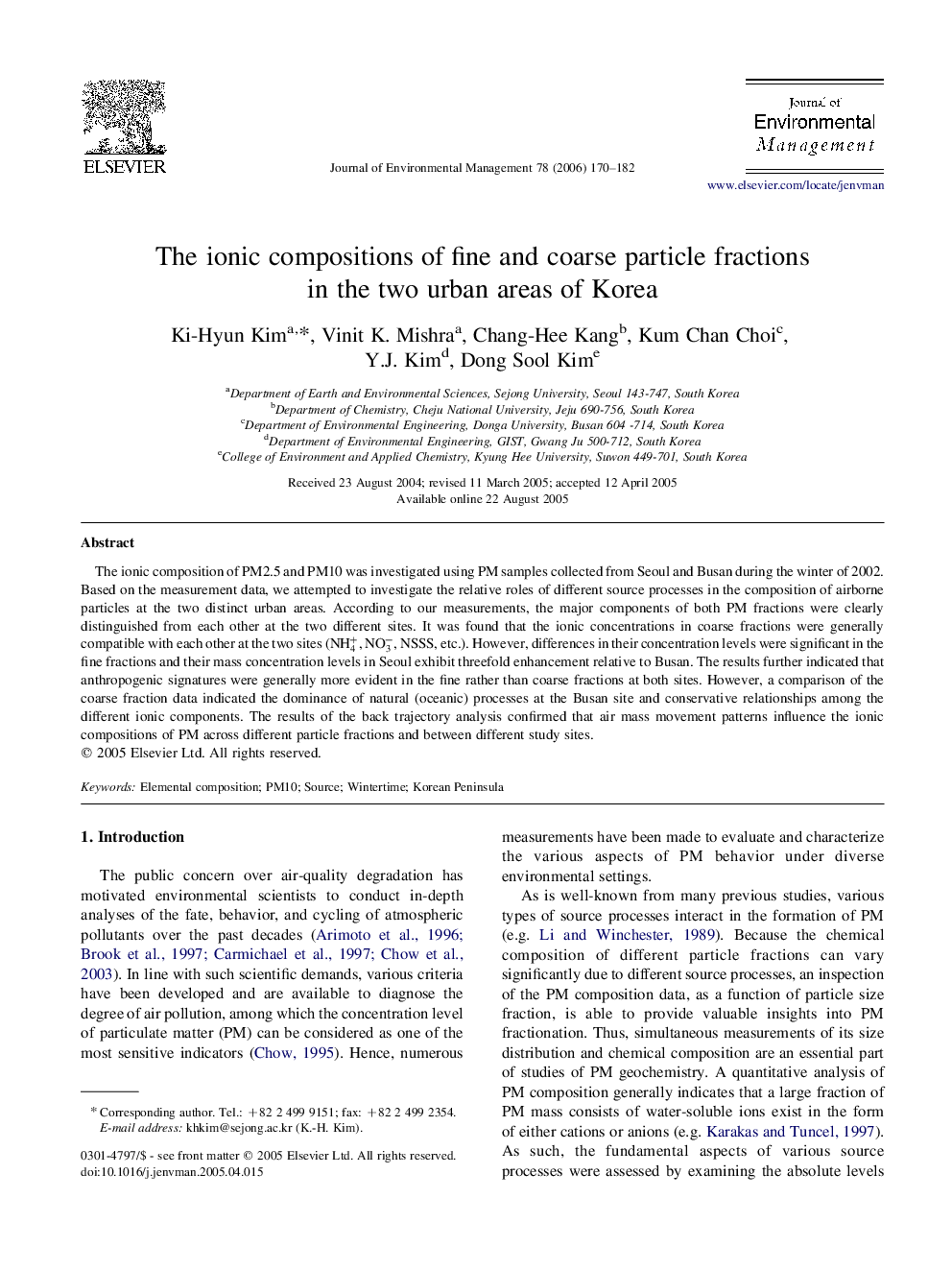| Article ID | Journal | Published Year | Pages | File Type |
|---|---|---|---|---|
| 1058525 | Journal of Environmental Management | 2006 | 13 Pages |
Abstract
The ionic composition of PM2.5 and PM10 was investigated using PM samples collected from Seoul and Busan during the winter of 2002. Based on the measurement data, we attempted to investigate the relative roles of different source processes in the composition of airborne particles at the two distinct urban areas. According to our measurements, the major components of both PM fractions were clearly distinguished from each other at the two different sites. It was found that the ionic concentrations in coarse fractions were generally compatible with each other at the two sites (NH4+, NO3â, NSSS, etc.). However, differences in their concentration levels were significant in the fine fractions and their mass concentration levels in Seoul exhibit threefold enhancement relative to Busan. The results further indicated that anthropogenic signatures were generally more evident in the fine rather than coarse fractions at both sites. However, a comparison of the coarse fraction data indicated the dominance of natural (oceanic) processes at the Busan site and conservative relationships among the different ionic components. The results of the back trajectory analysis confirmed that air mass movement patterns influence the ionic compositions of PM across different particle fractions and between different study sites.
Related Topics
Physical Sciences and Engineering
Energy
Renewable Energy, Sustainability and the Environment
Authors
Ki-Hyun Kim, Vinit K. Mishra, Chang-Hee Kang, Kum Chan Choi, Y.J. Kim, Dong Sool Kim,
